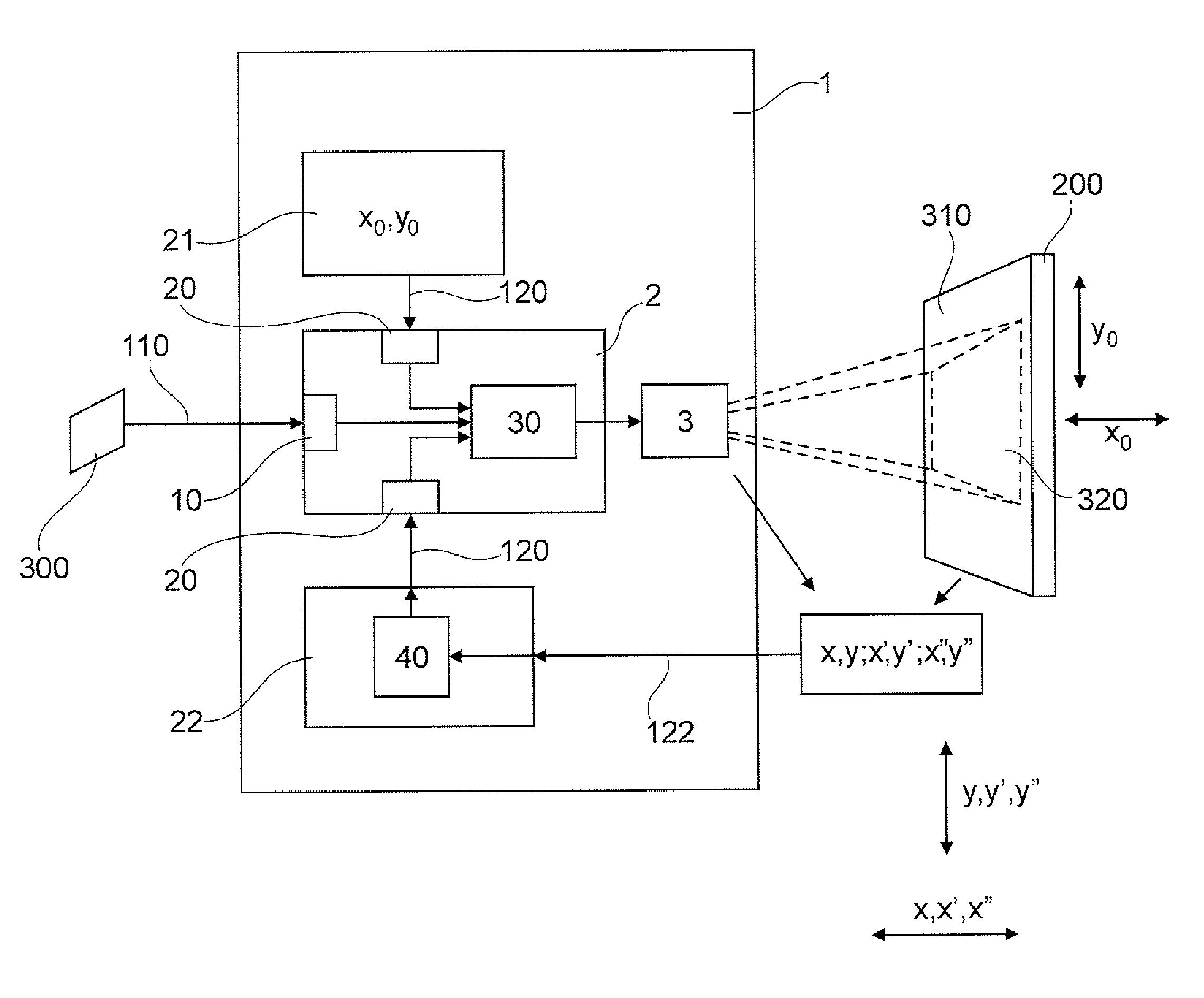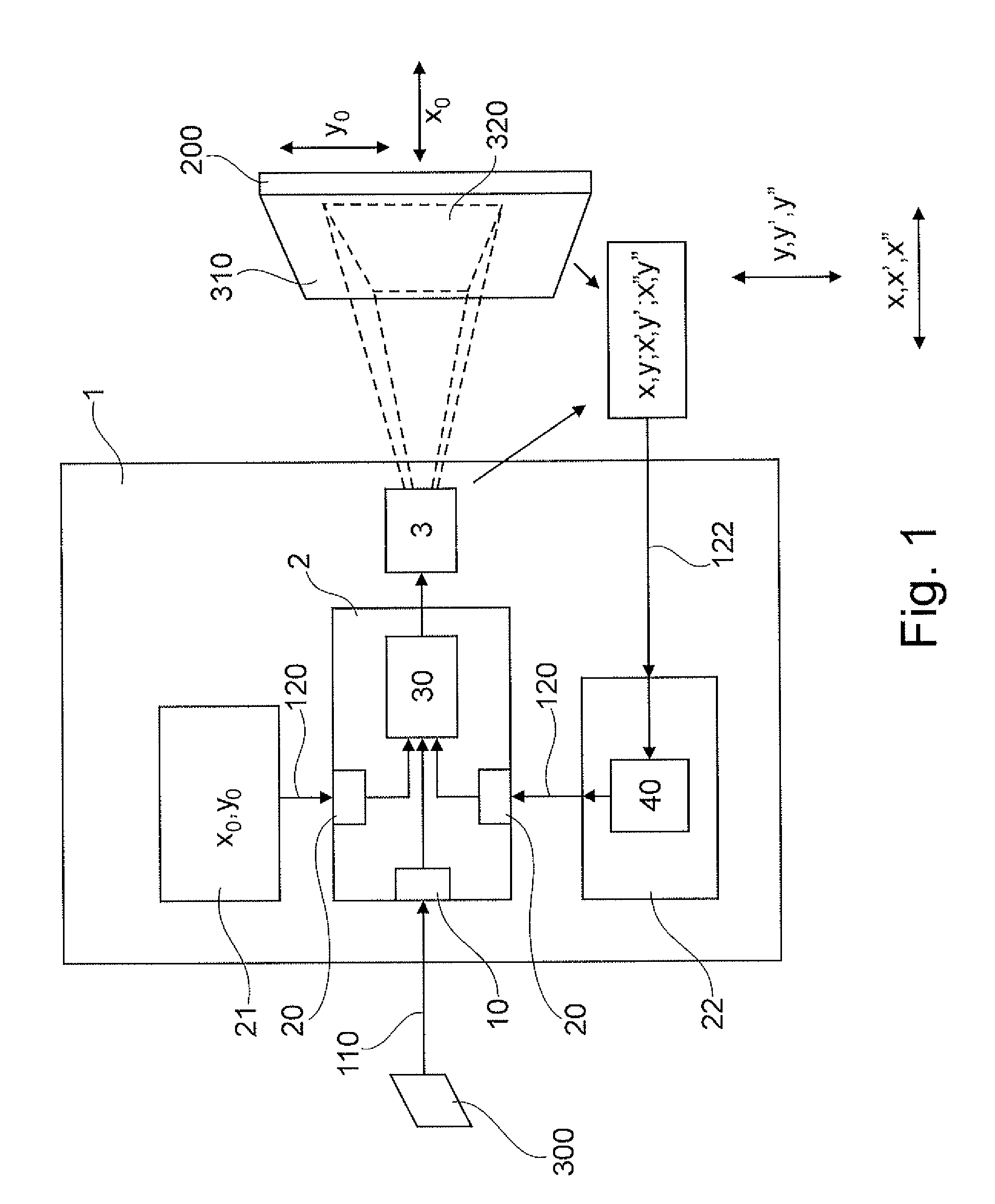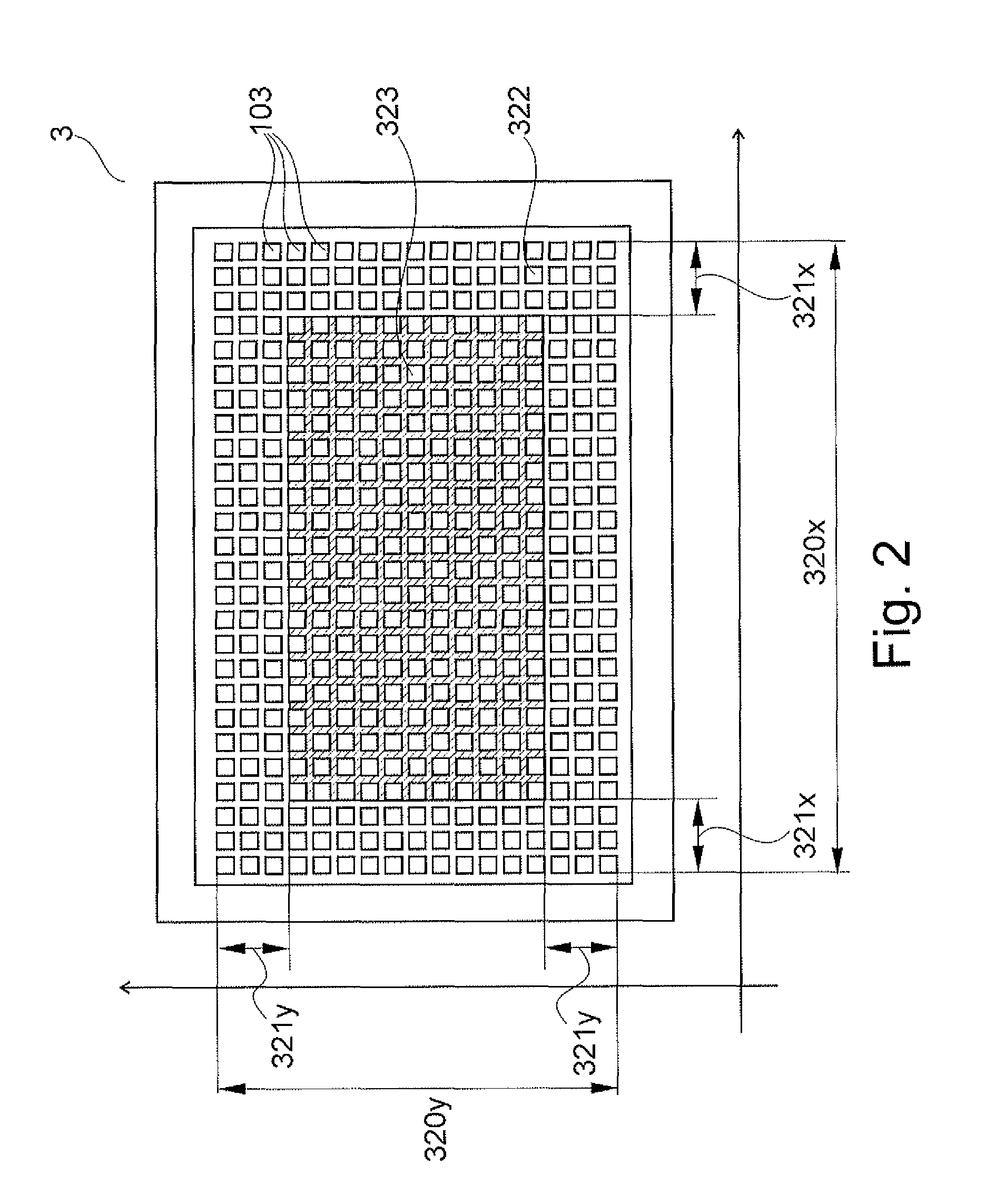Image adjustment device and method for an image projector in an aircraft
- Summary
- Abstract
- Description
- Claims
- Application Information
AI Technical Summary
Benefits of technology
Problems solved by technology
Method used
Image
Examples
Embodiment Construction
[0051]FIG. 1 shows a diagrammatic view of an exemplary embodiment of the invention. The image projection device 1 has an image adjustment device 2, an image projection or image display device 3, an input device 21 as well as a position-time state acquisition device 22. Let it be noted at this juncture that just an input device 21 or only a position-time state acquisition device can be provided, for example, so that an input device 21 and position-time state acquisition device 22 need not be provided at the same time. The input device 21 makes it possible to manually enter a desired position, in which the image 300 to be displayed is to be displayed on a display surface 200, for example. A desired position can here be an image alignment, but also an image distortion, which need not be limited solely to stretching with respect to height and width. Rather, a preliminary distortion can also be provided, for example, to enable an adjustment of the image 300 to be displayed to a curved pr...
PUM
 Login to View More
Login to View More Abstract
Description
Claims
Application Information
 Login to View More
Login to View More - R&D
- Intellectual Property
- Life Sciences
- Materials
- Tech Scout
- Unparalleled Data Quality
- Higher Quality Content
- 60% Fewer Hallucinations
Browse by: Latest US Patents, China's latest patents, Technical Efficacy Thesaurus, Application Domain, Technology Topic, Popular Technical Reports.
© 2025 PatSnap. All rights reserved.Legal|Privacy policy|Modern Slavery Act Transparency Statement|Sitemap|About US| Contact US: help@patsnap.com



